9 Shoulder Exercises To Heal And Recover From A Labral Tear Shoulder Injury
Easy-to-follow and effective exercises to help treat unstable shoulder joints.
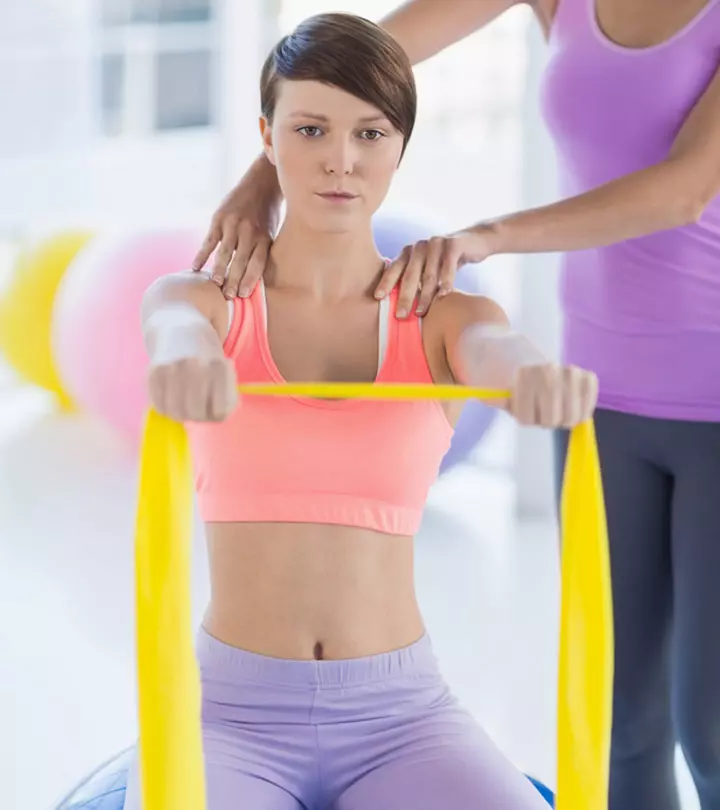
Image: Shutterstock
The labrum is a circular piece of cartilagei A strong and flexible connective tissue between joints and bones that reduces friction during movement. that keeps the shoulders locked in place. A broken, torn, or frayed labrum can lead to an unstable shoulder joint that causes shoulder pain, and, in some cases, shoulder dislocation. According to Dr. Jordan Duncan, Doctor of Chiropractici An alternative medicine that treats a person’s neuromusculoskeletal system with specific hands-on manipulations. , “there are various reasons a shoulder labral tear occurs. Falling on an outstretched hand is a classic example. Labral tears can also occur in overhead athletes, such as baseball pitchers. These tears are commonly SLAP (Superior Labrum Anterior to Posterior) lesionsi Abnormal change or damage in the tissue caused by trauma or disease that may or may not be serious. .”
What’s the best solution for a shoulder labral tear? Chartered Physiotherapist, Peter Keane, BSc., MSc. says, “Usually if you suffer from a labrum tear a doctor will recommend surgery followed by physical therapy. However, you can engage in some exercises prior to the surgery to aid the overall recovery. In some cases the exercises can even be enough to prevent surgery altogether.”
A study was conducted on 442 patients to assess the prevalence of posterior and combined labral tears in people with a history of surgery related to shoulder labral tears. The mean age of patients was 25.9 years. As per the results, 52.9% had isolated anterior labral tears, 16.3% had posterior, and 30.8% had combined anteroposterior labral tears.
In this post, we have listed the 8 best shoulder rehab exercises to heal your shoulder labral tear better. Perform these shoulder mobility exercises after consulting your doctor.
 Workout Blueprint: Shoulder Labral Tear Exercises
Workout Blueprint: Shoulder Labral Tear Exercises- Frequency: Daily
- Benefits: Improve shoulder strength and stability.
- Equipment Needed: Exercise mat, resistance band, bench.
- Space Required: Large area
- Assistance Required: Yes
- Who Should Avoid: Individuals with severe shoulder pain.
In This Article
Things To Consider Before Starting Shoulder Exercises
It is ideal to be extremely careful and follow all possible precautions when you begin rehabilitative exercises to recover from any physical injuries. This ensures you do not overexert yourself and allow your body to heal at a comfortable pace. Therefore, consider the stage and severity of your labral shoulder tear injury before incorporating any new exercises into your routine. Here is how you can gradually strengthen your shoulders at various stages of recovery:

- Acute Phase (0-6 Weeks Post Injury): Avoid overhead movements or heavy resistance as the labrum is vulnerable. Focus on gentle stretches, pendulum swings, and assisted range-of-motion exercises to prevent stiffness.
- Intermediate Phase (6-12 Weeks Post Injury): Introduce isometric shoulder exercises and light resistance band movements to regain strength without overloading the labrum.
- Advanced Phase (12+ Weeks Post Injury): Gradually transition to full range-of-motion exercises and progressive resistance training to restore shoulder function and prevent injuries.
Always consult a healthcare professional or physical therapist before starting any new exercise regimen to ensure safety and proper form. In this article, we have put together a list of exercises that are generally suitable for recovery after a shoulder injury. In the next section, we tell you how we narrowed down the list. Keep reading.
Key Takeaways
- In some cases, shoulder labral tear exercises can facilitate healing and be enough to prevent the need for surgery.
- Exercises like internal rotation, blackburn, lateral abduction, etc., can help to improve shoulder strength, range of motion, and shoulder stability.
- Avoid exercises that promote muscle imbalance and dominance of the large muscles on the front of the body.
How These Shoulder Exercises Were Selected
A shoulder labral tear can cause pain, instability, and limited mobility, making rehabilitation crucial for recovery. Gentle yet effective exercises can help strengthen the shoulder joint, improve stability, and restore range of motion.
The importance of rehabilitation in treating labral tears is underscored by research. A Journal of Shoulder Elbow Surgery study examined the effectiveness of nonsurgical treatment of superior labrum anterior-posterior (SLAP) tears in athletes. Researchers compared five studies of 244 athletes, including weightlifters, baseball, and softball players. Overall, the return-to-play rate was about 54%, but among those who completed their rehabilitation program, it was 78%. Only 42.6% of athletes returned to their previous level of performance, but this increased to 72% among those who had rehabilitation. The study found that older age, overhead sports, and certain injuries reduced the effectiveness of nonsurgical treatment. The researchers concluded that while rehabilitation should be the first option, some athletes would still require surgery (1).
Such a focus on rehabilitation is also part of another study in Open Orthopaedics Journal, which described the diagnosis and treatment of SLAP tears in athletes. These researchers pointed out the difficulty in diagnosing SLAP tears in that MRI scans would show these tears even in those with no symptoms. Comparing non-surgical rehabilitation and traditional surgery, the study concluded that athletes, particularly throwers, had a higher success rate of returning to play with rehabilitation. Their recommended protocol was to stretch the posterior capsule, correct scapular posture, and do closed-chain exercises like “Ball on the Wall” to strengthen the rotator cuff and scapula safely (2).
In the next section, we have introduced similar exercises that can support rehabilitation after a labral tear injury. Keep reading to know more.
9 Best Shoulder Labral Tear Exercises
The following exercises were carefully chosen based on physical therapy protocols for shoulder rehabilitation. They focus on:
- Gentle mobilization to reduce stiffness
- Strengthening the rotator cuff and stabilizing muscles
- Improving flexibility and joint function
- Minimizing strain on the injured labrum
However, results vary based on injury severity, individual healing rates, and consistency in following a rehabilitation plan. Now, scroll down to learn more about these exercises.
1. Internal Rotation
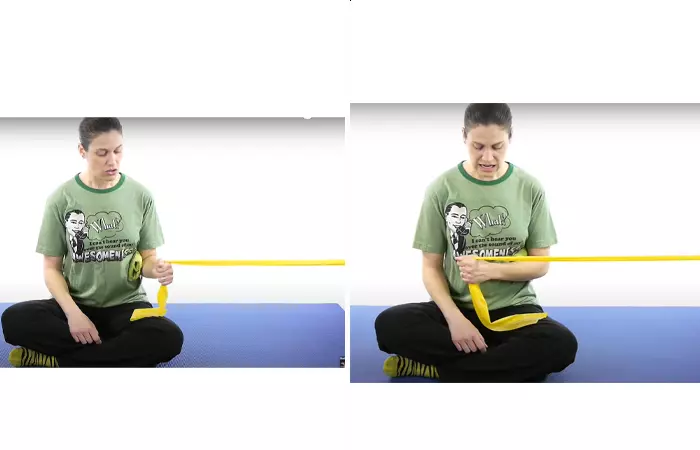
Steps
- Secure a resistance band. Hold one end and sit down on a mat or a chair. Keep your forearm at 90 degrees to the upper arm, with your thumbs out. This is the starting position.
- Place a rolled towel between your elbow and body.
- Pull the resistance band towards your body thereby creating an internal rotation movement. Keep your elbow against the towel while performing this movement.
- Pause for a second and move your hand back to the starting position.
- Do this 15 times, twice a day.
2. Wall Walk Stretches
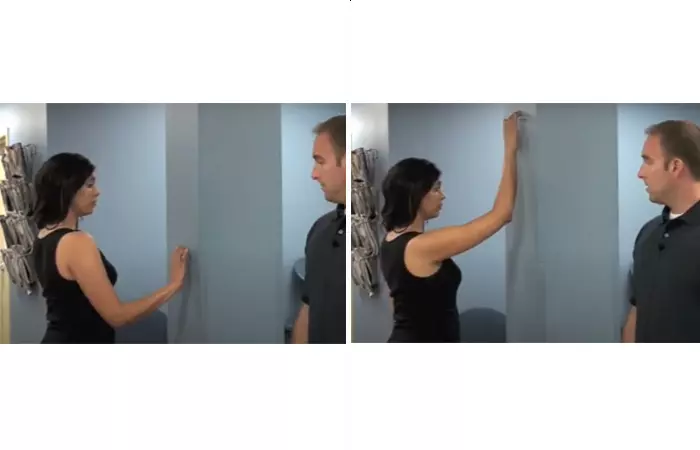
Steps
- Stand facing a wall, about 6 inches from it.
- Place your affected hand on the wall. This is the starting position.
- Begin to walk your hands up the wall and hold for 20 seconds.
- Walk back down to the starting position.
- Repeat this 3 times, twice a day.
3. Blackburn Exercise
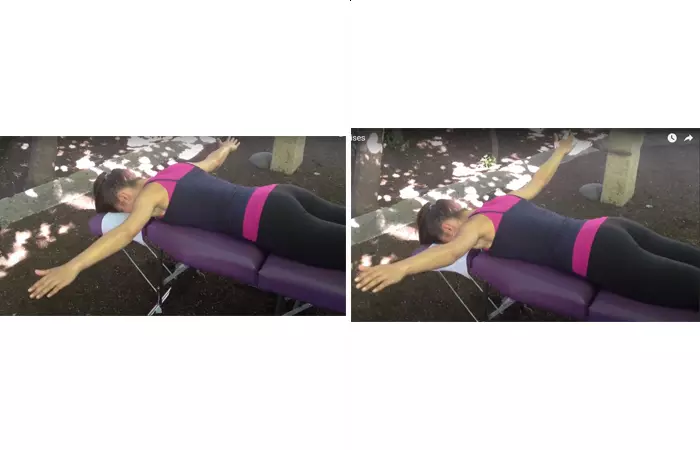
Steps
- Lie on your belly on a mat or a bench.
- Keep your arms extended out to your sides, palms facing down.
- Squeeze the shoulder blades together and lift the arms up without bending the elbows.
- Count to 5 and relax.
- Do these shoulder blade exercises 15 times, twice a day.
 Quick Tip
Quick Tip4. Rotator Cuff Strengthening

Steps
- Lie down on your belly on the bed or sofa.
- You may hold a 1- or 2-pound weight with your affected hand. Do not use weights if you are not comfortable yet.
- Let your hand dangle down. This is the starting position.
- Move your hands to the back, as far as you can go. But do not lift them too high up.
- Hold for a second and return to the starting position.
- Raise your hands laterally upwards.
- Pause for a moment and bring your hands back to the starting position.
- Do this set of rotator cuff exercises 15 times, twice a day.
5. Scapular Stability Exercise
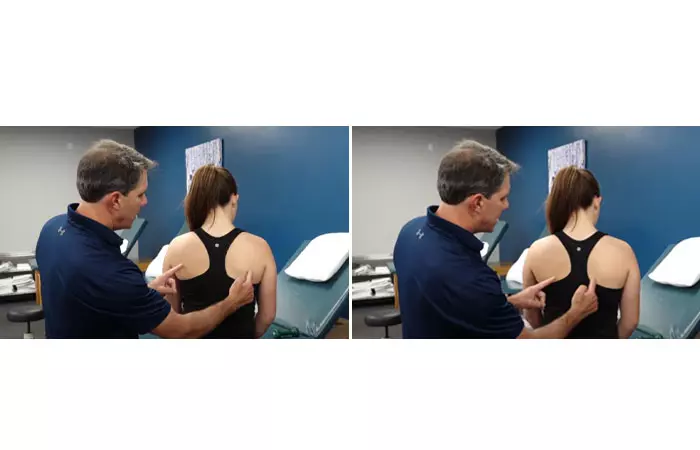
Steps
- Stand with legs hip-width apart.
- Push your shoulders back to squeeze your shoulder blades together.
- Push your shoulder blades down.
- Hold for a few seconds.
- Relax.
- Do these shoulder stability exercises 15 times, twice a day.
6. Shoulder ‘I’s And ‘Y’s

Steps
- Lie down on your belly on a mat.
- Extend your hands in front of you and keep your head down.
- Lift your hands off the floor.
- Bring them down.
- Do the shoulder ‘I’s 10 times.
- Move your hands apart so that they resemble a ‘Y’.
- Lift your hands off the floor.
- Bring them down.
- Do the shoulder ‘Y’s 10 times.
- Do this set twice, two times a day.
7. Shoulder Horizontal Abduction

Steps
- Hold a resistance band and sit in a chair.
- Keep your hands extended in front of you, hands shoulder-width apart.
- Pull your hands apart until they are fully stretched to the side.
- Bring your arms back to the starting position.
- Do this 10 times, twice a day.
8. Shoulder Scaption
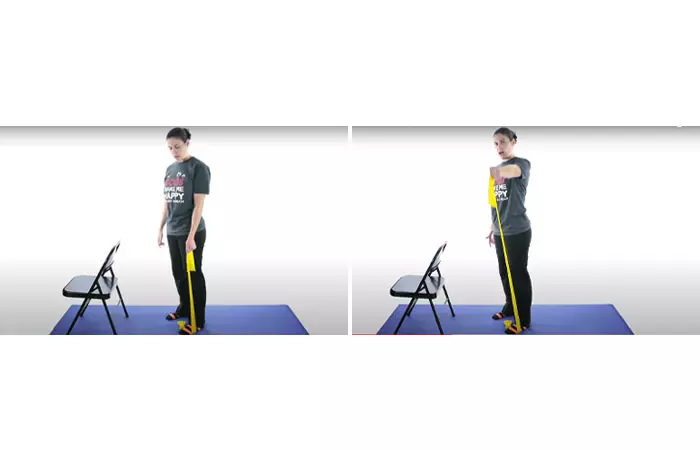
Steps
- Secure one end of a resistance band under your feet. Hold the other end with your hand. Do not bend your elbow. Keep your hand to your side. This is the starting position.
- Point your hand out at 45 degrees.
- Raise your hand, without bending your elbow, until your hand is at your shoulder level.
- Bring your hand back to the starting position.
- Do this simple resistance band exercise 10 times, twice a day.
9. Seated Shoulder Press Exercise

Steps
- Sit on a stable surface, like a weight bench or a stable chair, with your feet flat on the floor.
- Hold a dumbbell in each hand at shoulder level, with your palms facing forward and your elbows bent at 90°. Maintain a straight back, chest up, and your core engaged.
- Keep your head in a neutral position, looking forward.
- Exhale and push the dumbbells upward and fully extend your arms overhead.
- Avoid locking your elbows at the top.
- Inhale and slowly lower the dumbbells back to the starting position.
- Do 3-4 sets of 8-12 repetitions every day.
 Did You Know?
Did You Know?These are the 9 shoulder strengthening exercises you can do at home that help with a labral tear. Exercise therapy helps in faster recovery.
Simon, a YouTuber, shares in one of his vlogs his experience of undergoing shoulder surgery: “I thought maybe I’ve just flared up the joint and it will settle down on its own, and if it doesn’t, I will get surgery. With a bit of gentle rotator cuff rehab and time alone, the symptoms went away (i).” However, he continues, “About 2 years later, in 2025, my shoulders started hurting again.” After multiple wrong diagnoses and rehab therapies, he was diagnosed with a labral tear and underwent surgery.
However, you must perform these exercises with caution to avoid injuries. Keep reading to learn more.
Safety Tips For Shoulder Exercises
- Consult a healthcare professional before starting any exercise program to ensure it is appropriate for your condition.
- Start slowly with gentle range-of-motion exercises to avoid further injury. Gradually increase intensity as tolerated.
- Listen to your body and pay attention to any pain or discomfort during exercises. If you experience sharp pain, stop immediately and consult your healthcare provider.
- Use proper form to prevent additional strain on the shoulder. Focus on the process and follow the instructions properly. Consider working with a trained professional for guidance.
- Warm up before exercise and cool down afterward to reduce the risk of injury and promote flexibility.
- Incorporate rest days to allow time for recovery between workouts. Overworking the shoulder can hinder healing.
- Avoid overhead movements and steer clear of exercises that require lifting weights above your head until your healthcare provider permits.
- Use supportive equipment, such as braces or supports, to stabilize the shoulder during exercises, if recommended.
- Focus on strengthening surrounding muscles, including exercises that strengthen the rotator cuff and shoulder stabilizers to provide better support.
- Monitor progress and track your recovery. In consultation with your healthcare provider, make adjustments to your exercise routine as needed.
Even if you follow these safety tips, you must avoid a certain shoulder range of motion exercises. Find out what they are in the following section.
Torn Labrum Exercises To Avoid
According to Dr. Jordan Duncan, Doctor of Chiropractic, it is better to avoid exercises that promote muscle imbalance and dominance of the large muscles on the front of the body.
Examples of not recommended shoulder injury exercises include bench press. Avoid doing any exercise that aggravates the injury. If you are an athlete, focus on recovery and rest. If you have had a fall, avoid picking heavy objects or going to the gym until your shoulder has fully recovered.
Ways To Avoid Shoulder Labral Problems
The best way to avoid shoulder labral problems is to “maintain excellent scapular control and rotator cuff strength, which, in turn improves shoulder stability”, says Dr. Jordan Duncan, Doctor of Chiropractic. Warm up for 10 minutes before exercising, cool down after, and do posture correction and shoulder and back strengthening exercises to prevent shoulder labral tears.
Infographic: Top 5 Shoulder Labral Tear Exercises
Dealing with a shoulder labral tear can be painful and tiring. Usually, doctors recommend surgery followed by shoulder physical therapy exercises as its treatment. However, in rare cases, it is possible to prevent the surgery altogether by following simple exercises. Doing them before the surgery can also aid in overall recovery. Check out the infographic below for the best exercises for shoulder labral tear.
Some thing wrong with infographic shortcode. please verify shortcode syntaxShoulder labral tear exercises may sometimes prevent the need for surgery. If not, they can at least set the ground for a quick recovery post-surgery. So, talk to your doctor to find out if surgery is needed. Simultaneously, work with a physiotherapisti A healthcare professional who helps an individual achieve their maximum range of movement or physical ability. to improve the condition of your shoulder. The best thing about these exercises is that you don’t need to hit the gym to do them. The most you will need is a resistance band or a chair. Avoid exercises like bench press if you have a labral tear. You can even reduce the risk of these tears by working on your posture and doing back and shoulder impingement exercises.
Frequently Asked Questions
Can a labrum tear in the shoulder heal itself?
If the tear is minor, it may heal on its own. However, it is always better to consult a doctor.
What happens if a labral tear goes untreated?
If a labral tear goes untreated, it may cause chronic shoulder pain, weakness, and instability.
How long does it take to recover from a labral tear?
The labrum takes 4-6 weeks to reattach to the bone. However, the recovery time may vary depending on the area and the severity of the injury.
What types of professionals should I consult for shoulder rehab?
For shoulder rehab, consult a physical therapist for tailored exercises and an orthopedic surgeon for severe injuries. A sports medicine specialist can help with sports-related issues, while a chiropractor can provide manual therapy. An occupational therapist can assist with adapting daily activities and restoring function.
Learn how to exercise and workout safely while dealing with a shoulder labral tear. Watch this video now to get tips on the right exercises to strengthen and protect your shoulder.
Personal Experience: Source
StyleCraze's articles are interwoven with authentic personal narratives that provide depth and resonance to our content. Below are the sources of the personal accounts referenced in this article.
i. My Experience With Shoulder Surgery (Shoulder Reconstruction / Repair of torn Labrum)https://www.youtube.com/watch?v=qJG96NyIkQ4
References
Articles on StyleCraze are backed by verified information from peer-reviewed and academic research papers, reputed organizations, research institutions, and medical associations to ensure accuracy and relevance. Read our editorial policy to learn more.
- Return to play following nonsurgical management of superior labrum anterior-posterior tears: a systematic review
https://pubmed.ncbi.nlm.nih.gov/35063641/ - Superior Labral Anterior to Posterior Tear Management in Athletes
https://pmc.ncbi.nlm.nih.gov/articles/PMC6110067/
Read full bio of Julie Erickson
Read full bio of Ravi Teja Tadimalla
Read full bio of Moksha Gandhi






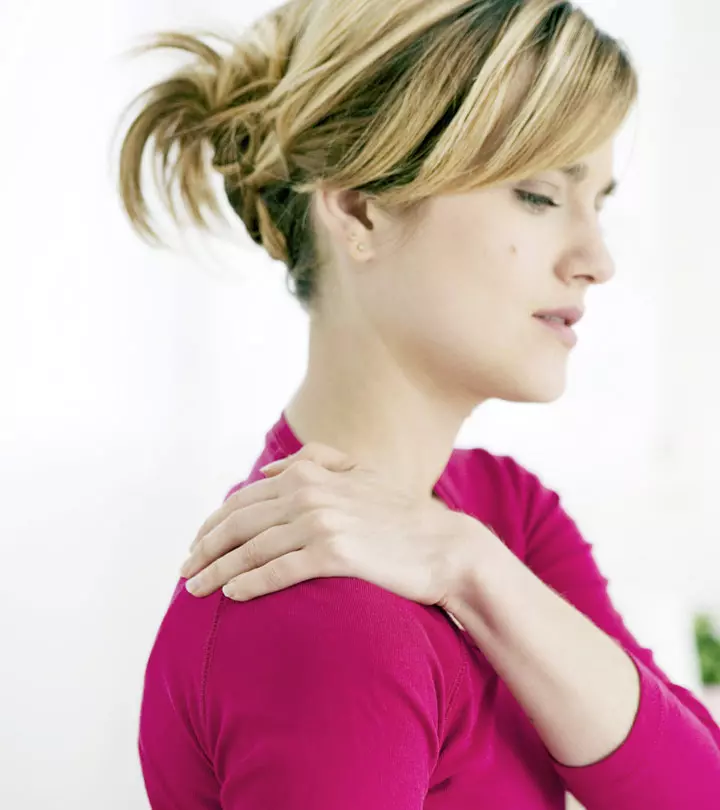
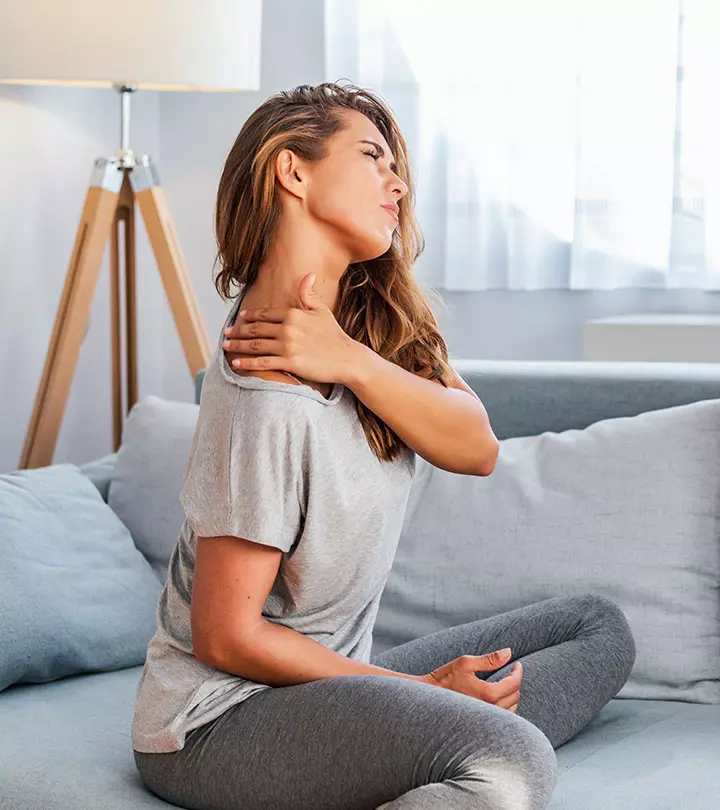
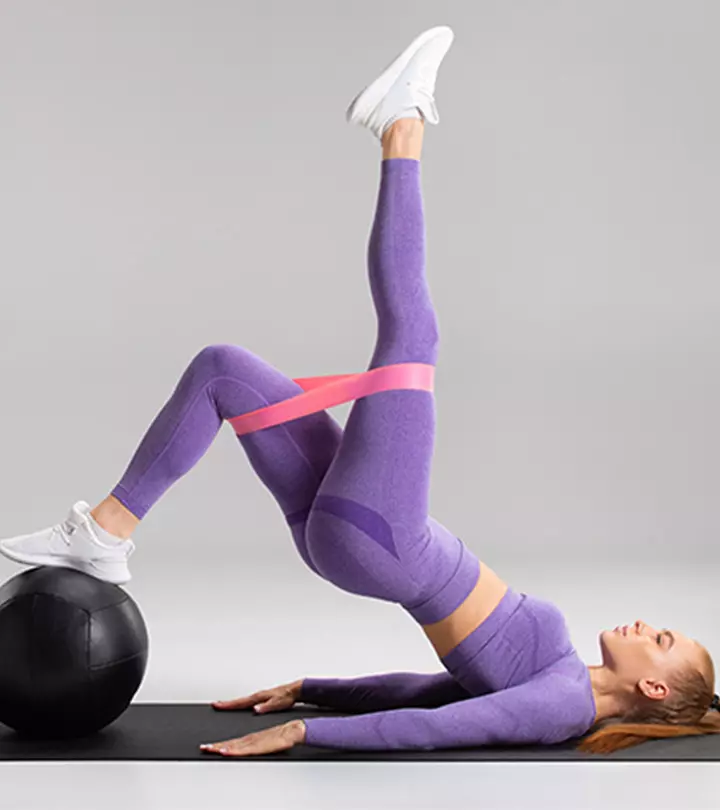
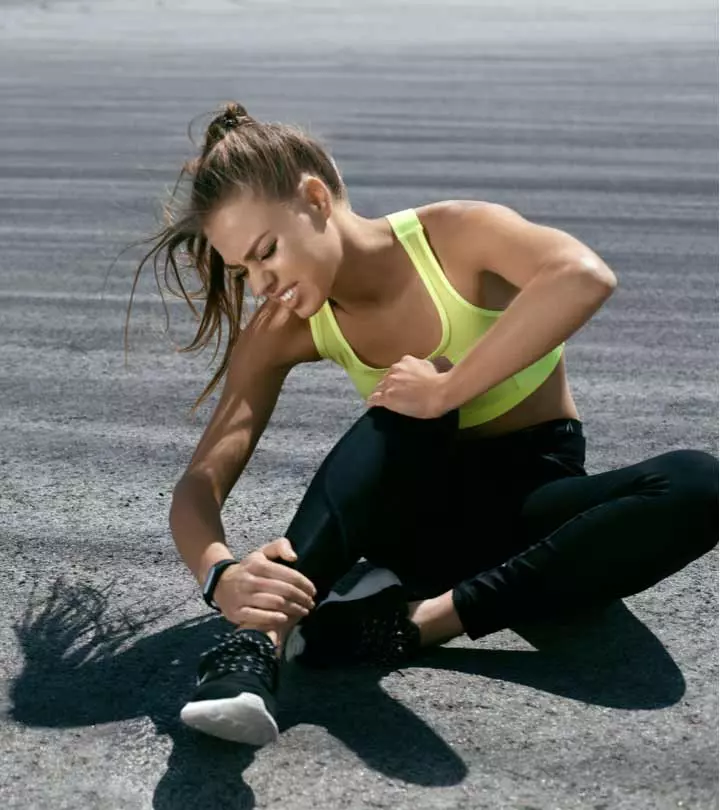

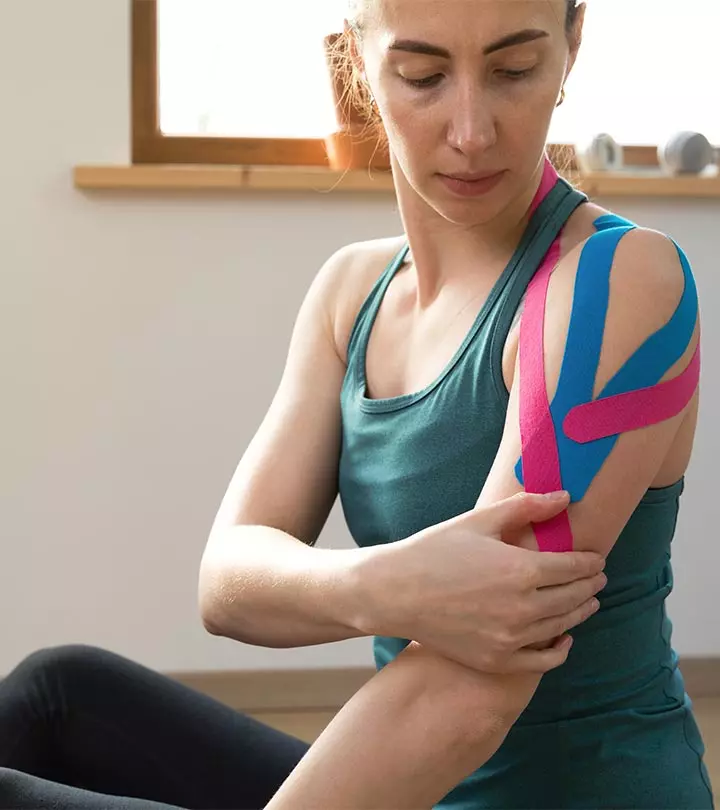
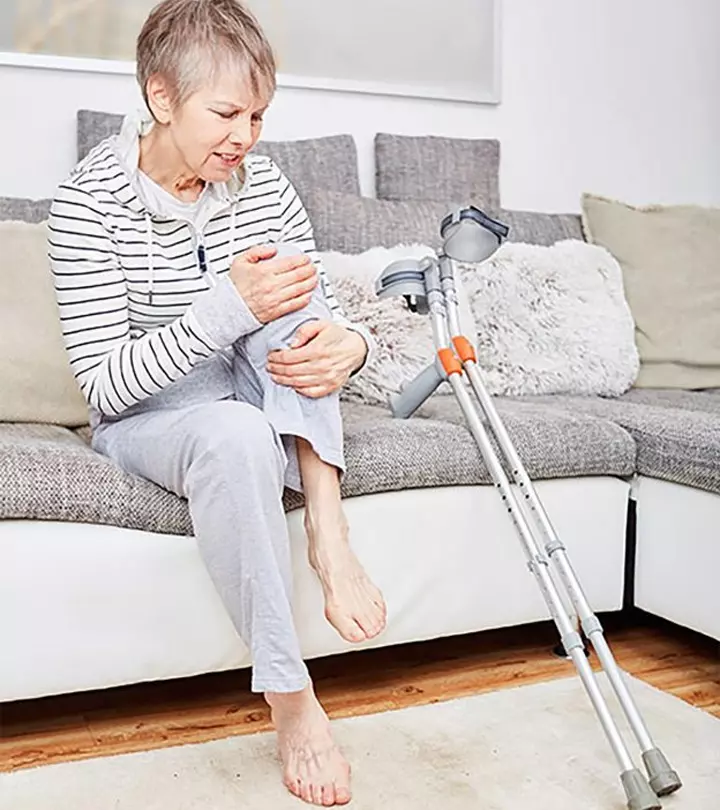
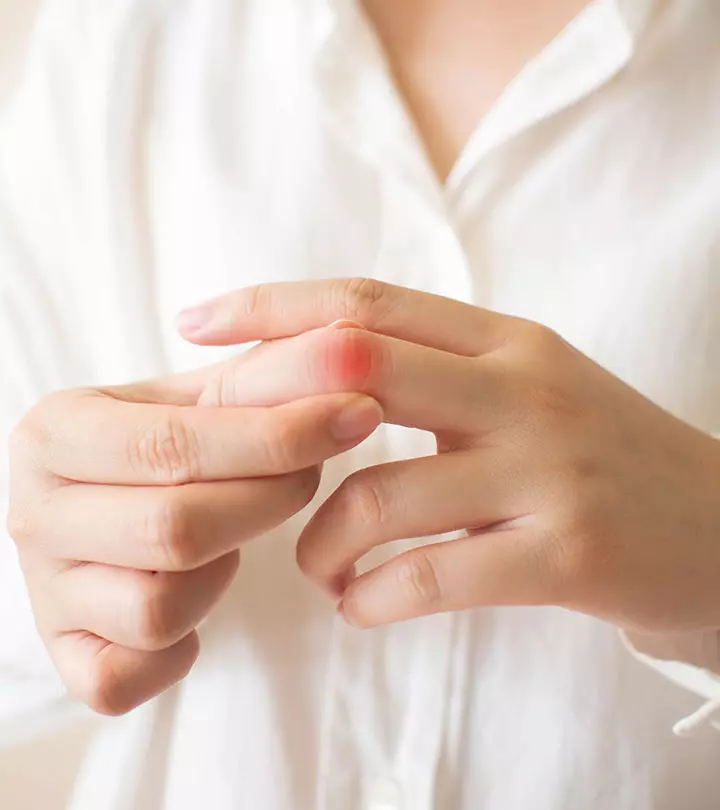

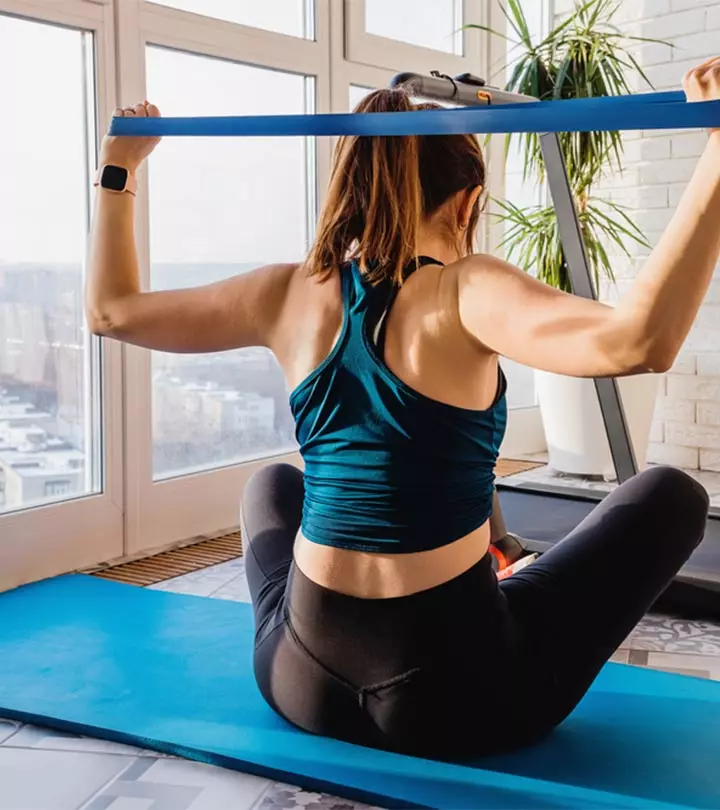
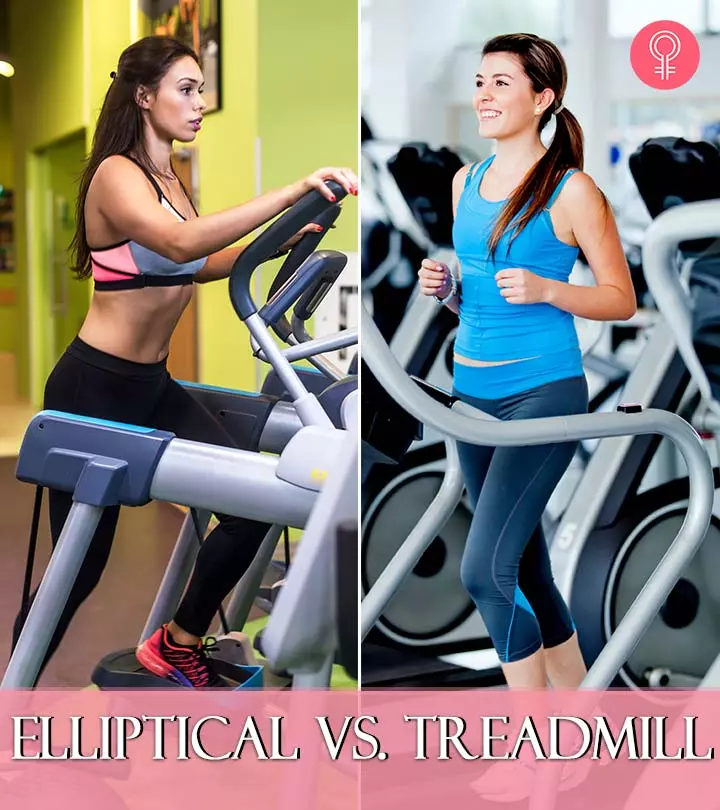
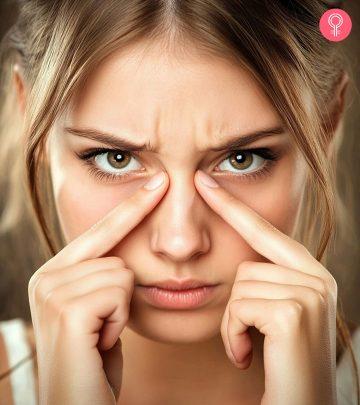

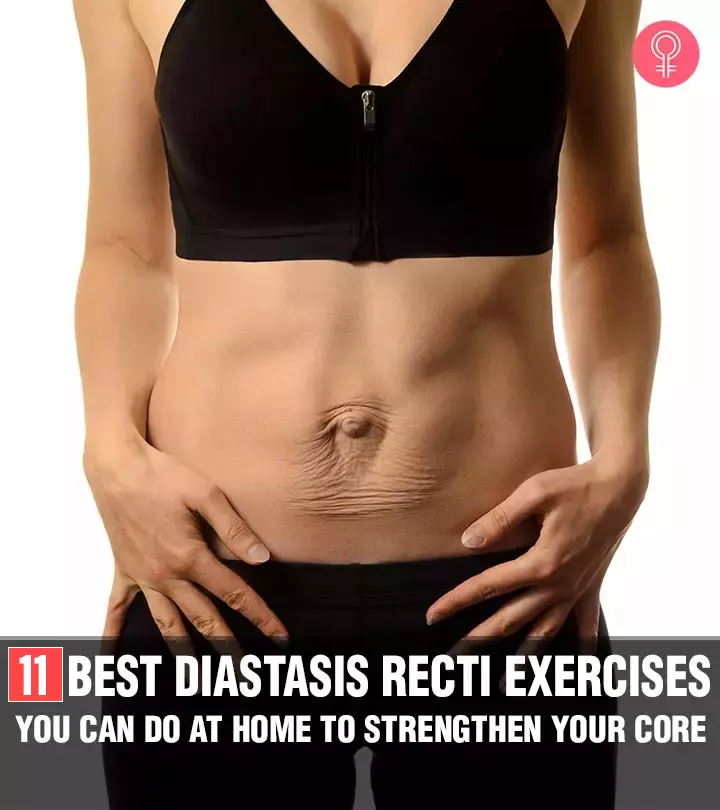
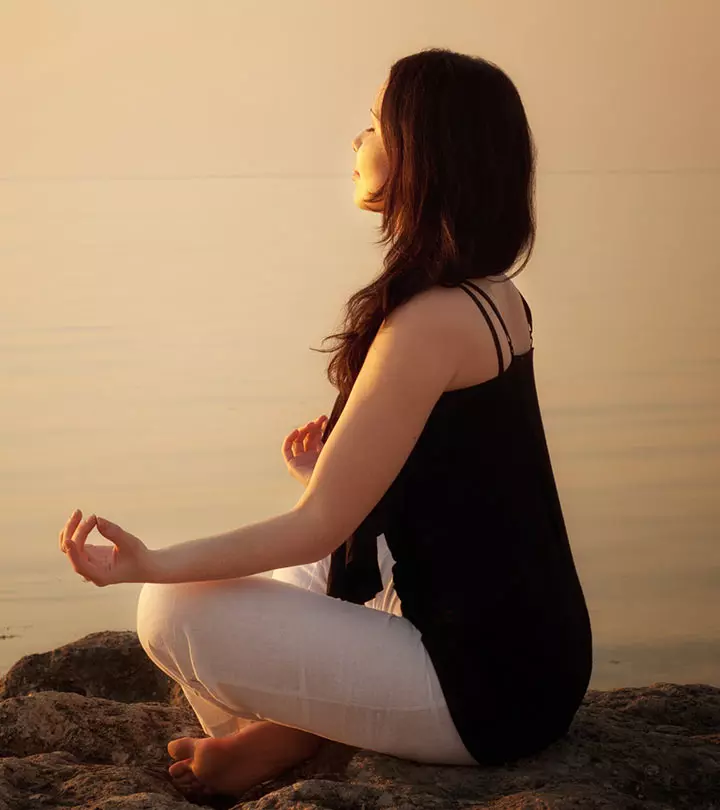






Community Experiences
Join the conversation and become a part of our empowering community! Share your stories, experiences, and insights to connect with other beauty, lifestyle, and health enthusiasts.